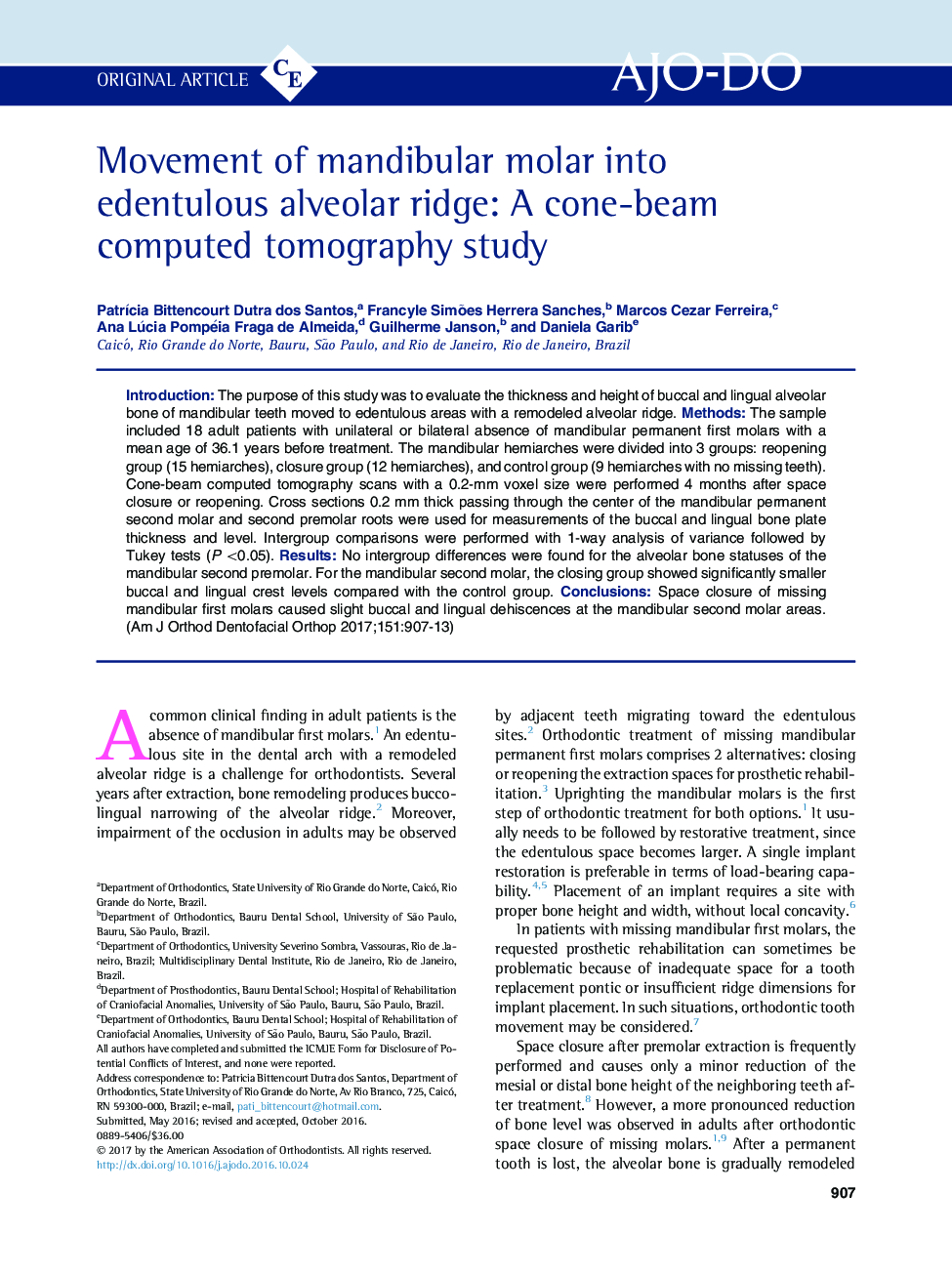| Article ID | Journal | Published Year | Pages | File Type |
|---|---|---|---|---|
| 5637684 | American Journal of Orthodontics and Dentofacial Orthopedics | 2017 | 7 Pages |
â¢Movement of premolars into edentulous ridges does not cause bone damage.â¢Movement of molars into edentulous ridges can provide crest level changes.â¢Cone-beam computed tomography allows identification of bone defects.
IntroductionThe purpose of this study was to evaluate the thickness and height of buccal and lingual alveolar bone of mandibular teeth moved to edentulous areas with a remodeled alveolar ridge.MethodsThe sample included 18 adult patients with unilateral or bilateral absence of mandibular permanent first molars with a mean age of 36.1 years before treatment. The mandibular hemiarches were divided into 3 groups: reopening group (15 hemiarches), closure group (12 hemiarches), and control group (9 hemiarches with no missing teeth). Cone-beam computed tomography scans with a 0.2-mm voxel size were performed 4 months after space closure or reopening. Cross sections 0.2 mm thick passing through the center of the mandibular permanent second molar and second premolar roots were used for measurements of the buccal and lingual bone plate thickness and level. Intergroup comparisons were performed with 1-way analysis of variance followed by Tukey tests (P <0.05).ResultsNo intergroup differences were found for the alveolar bone statuses of the mandibular second premolar. For the mandibular second molar, the closing group showed significantly smaller buccal and lingual crest levels compared with the control group.ConclusionsSpace closure of missing mandibular first molars caused slight buccal and lingual dehiscences at the mandibular second molar areas.
